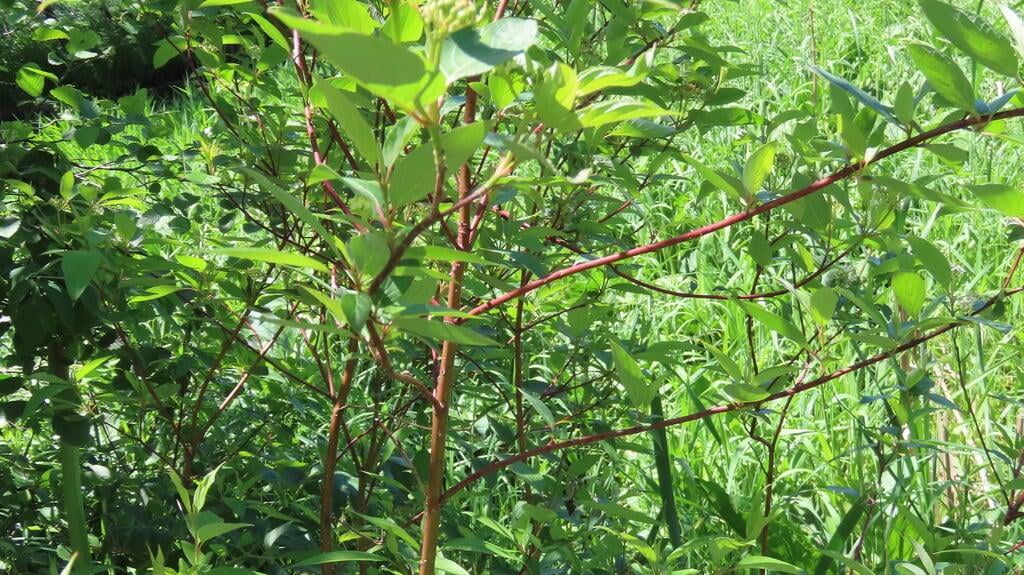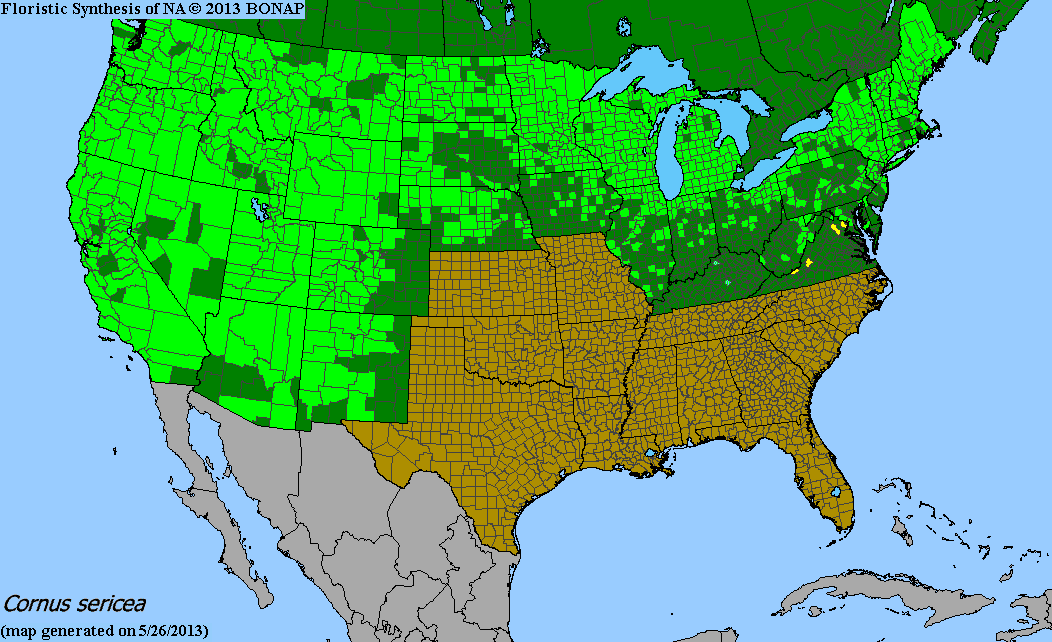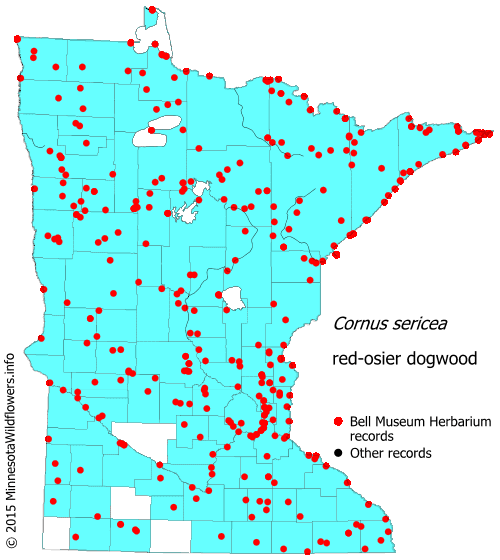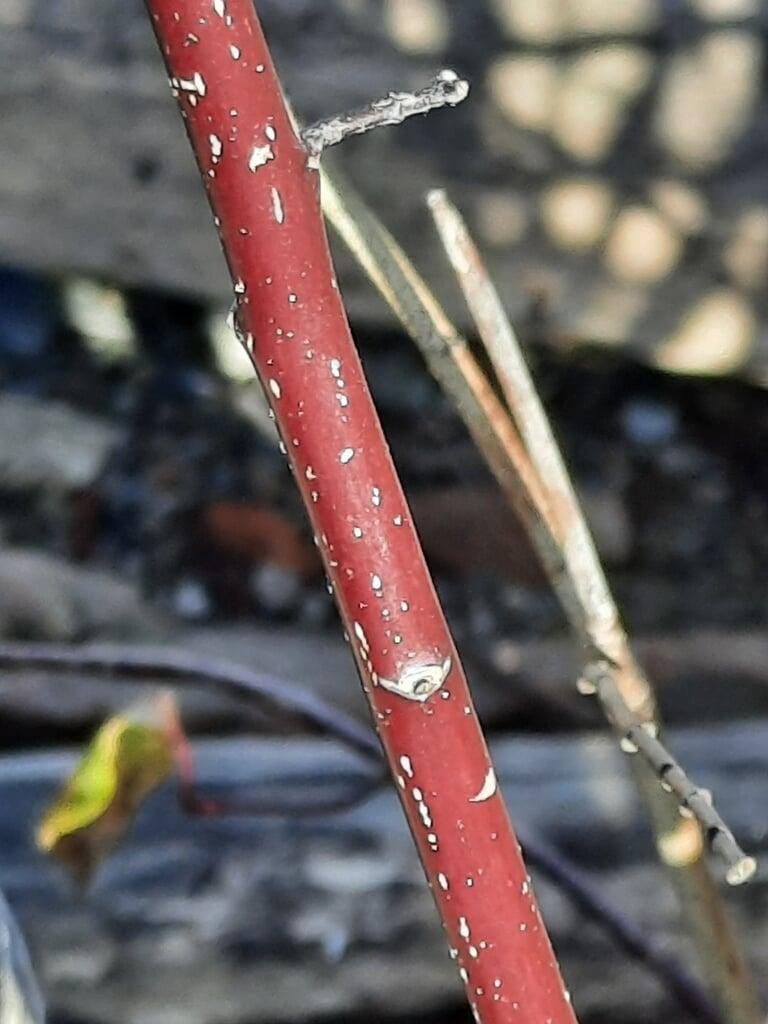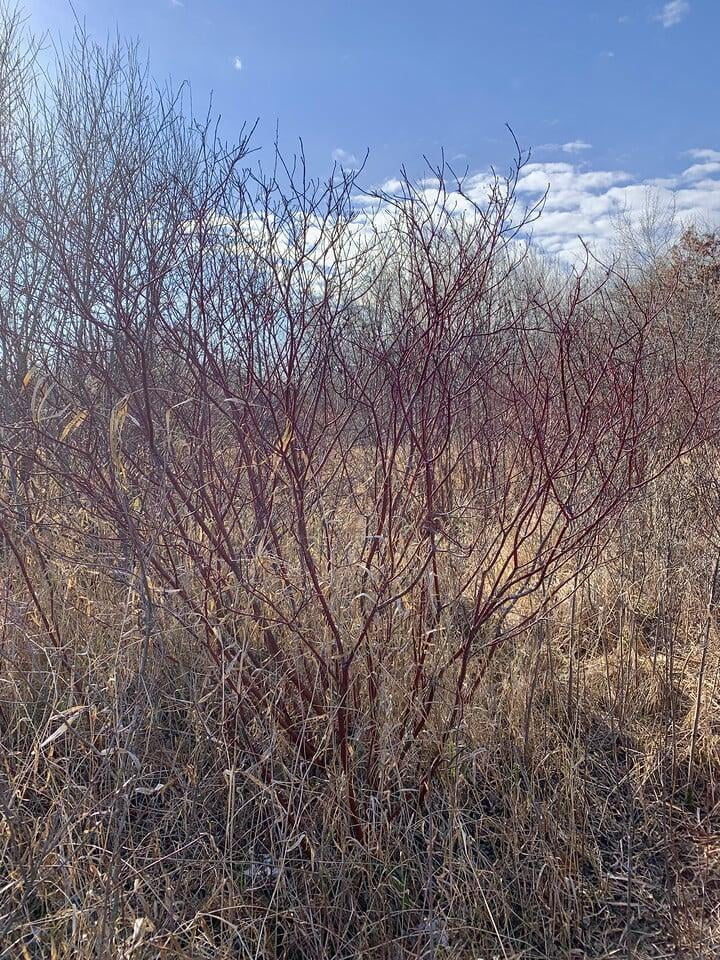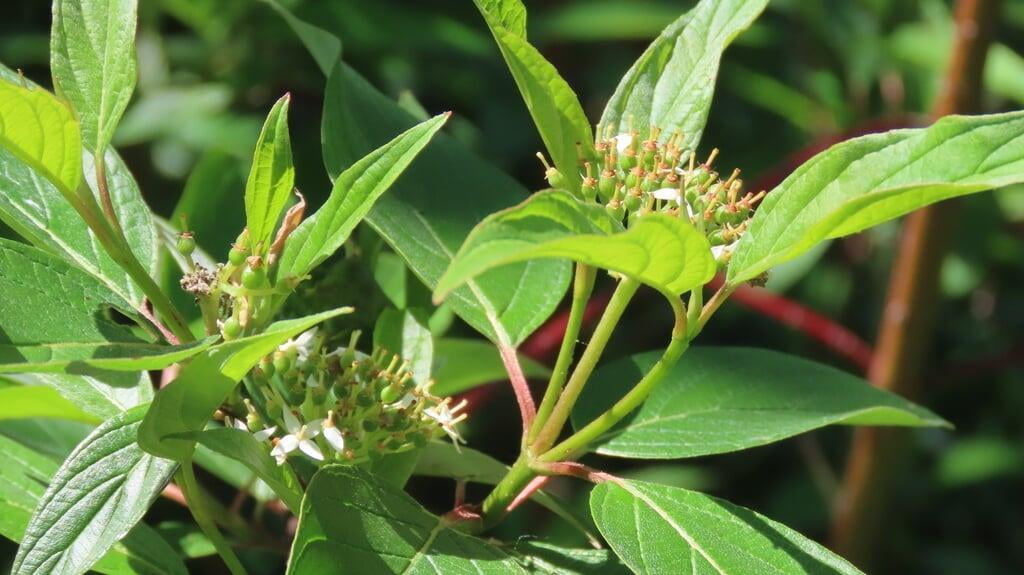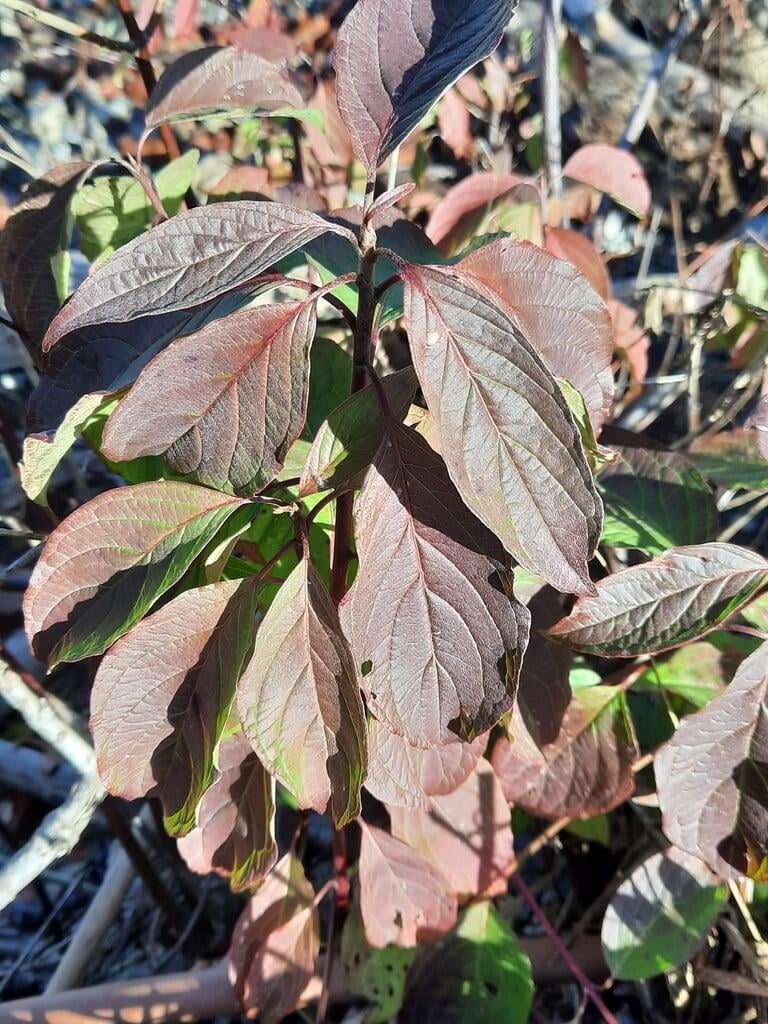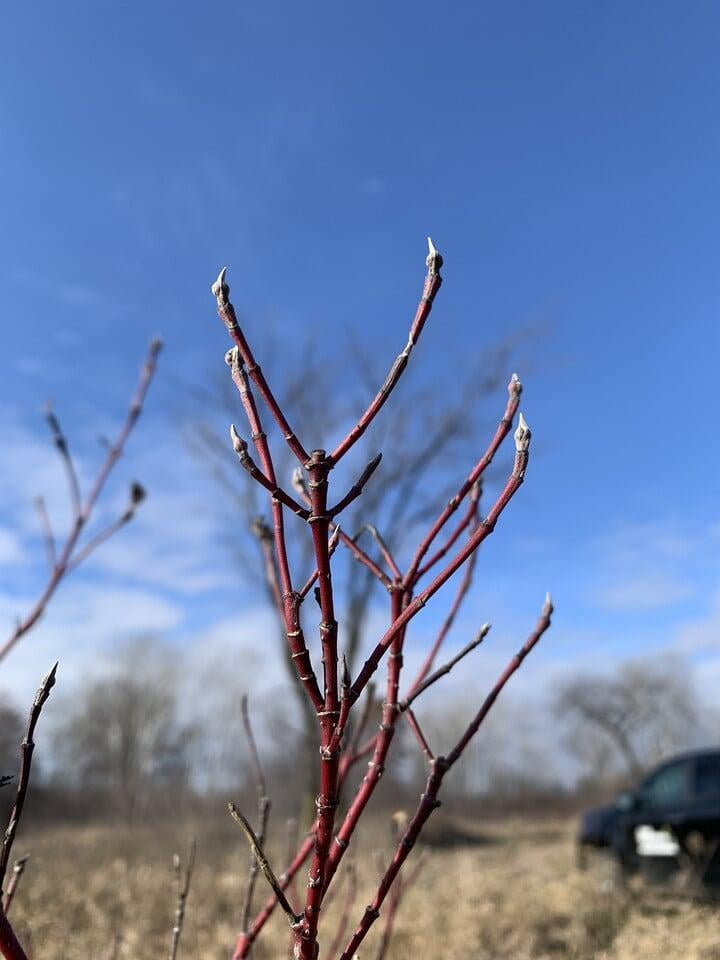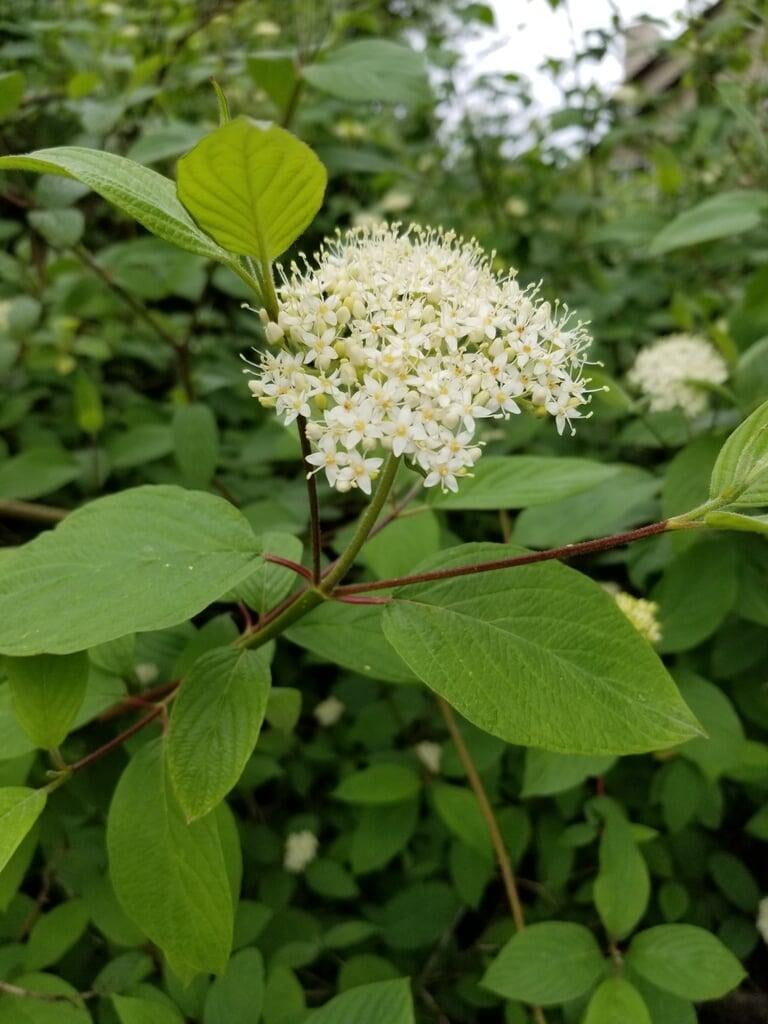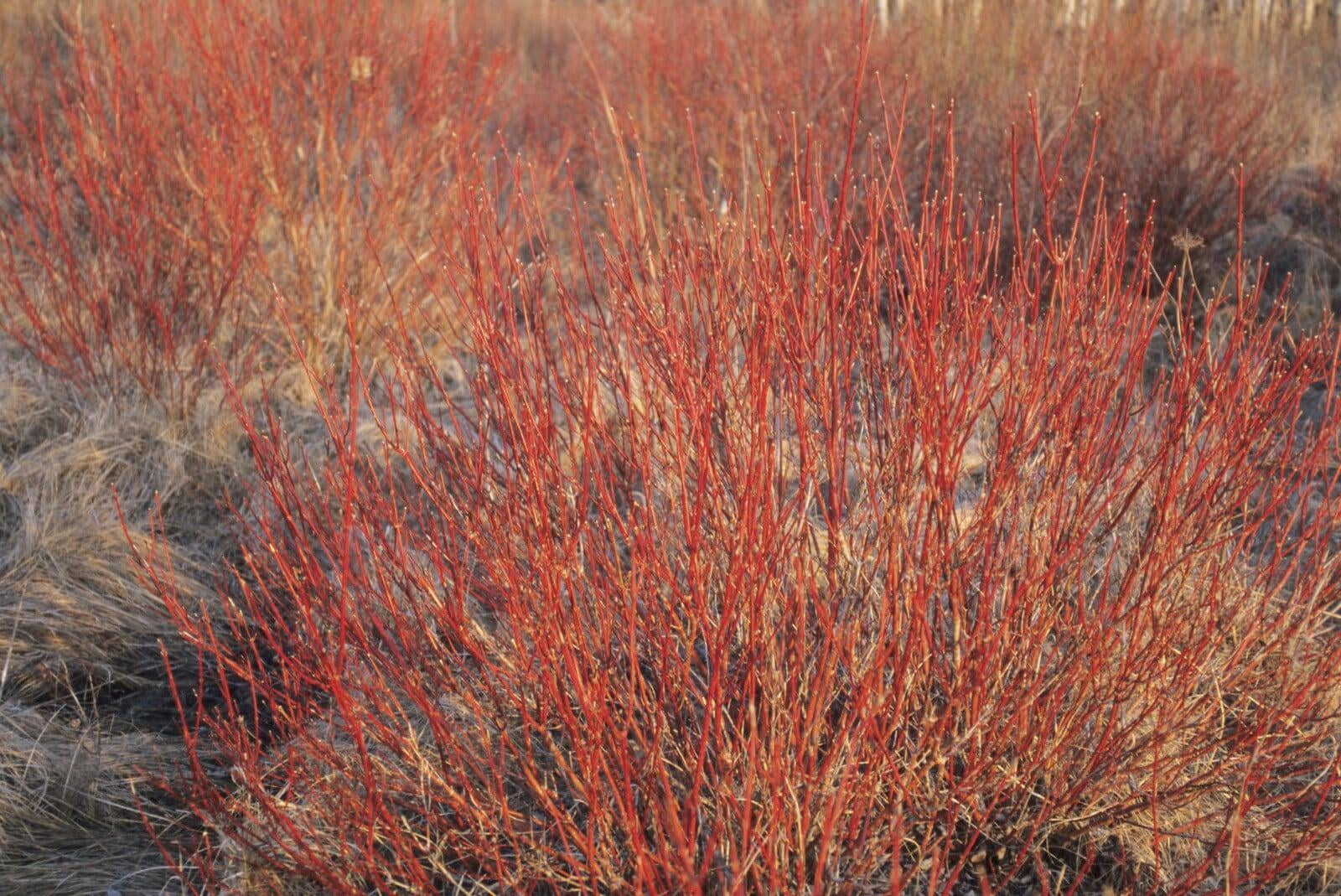Cornus sericea
Red-osier dogwood description:
Cornus sericea, also known as Red-osier Dogwood, is a deciduous shrub that is native to North America. It typically grows to a height of 3-8 feet and has an upright, spreading habit. The leaves are opposite, simple, and ovate, with a dark green color that turns reddish-purple in the fall.
One of the most striking features of Cornus sericea is how it provides interest throughout the winter months. In late spring to early summer, clusters of small, creamy white flowers appear, followed by clusters of white berries that persist into winter and provide food for birds and other wildlife.
Cornus sericea is a versatile shrub that can grow in a wide range of soil types. It is often used in landscaping and is an excellent choice for supporting local wildlife habitats.
Native Range:
Cornus sericea is found natively in the Western and Southwestern United States. Its range also extends Eastward in the Northern United States including states such as Minnesota, Michigan, New York, and Maine.
Standard Plant Information:
Plant Height: 3-8'
Bloom time: May - August
Preferred Habitat: Does well in part shade to full sun. Often found in wetlands.
Planting:
Planting a tree/shrub seedling or small potted tree/shrub properly is important to ensure its healthy growth and development. Here are the steps you can follow to plant a tree:
Choose the right spot: Select a spot with adequate sunlight, water, and soil drainage. Make sure the tree has enough space to grow to its full size without interfering with other plants, structures, or utility lines.
Prepare the soil: Dig a hole that is twice as wide and slightly shallower than the root ball of the seedling. Remove weeds or debris from the area. Loosen the soil around the edges of the hole to help the roots grow more easily.
Plant the seedling: Place the seedling in the hole, making sure the top of the root ball is level with the ground surface. Gently spread out the roots and fill in the hole with soil, tamping it down lightly as you go.
Water the seedling: Water the tree/shrub deeply and thoroughly after planting, making sure the soil is evenly moist. This will help settle the soil around the roots and eliminate any air pockets.
Monitor the growth: Keep an eye on the seedling to make sure it is getting enough water and sunlight, and that it is not being attacked by pests or diseases. Prune any damaged or dead branches as necessary, and provide support if needed.
By following these steps, you can help ensure the healthy growth and development of your newly planted tree/shrub seedling.

